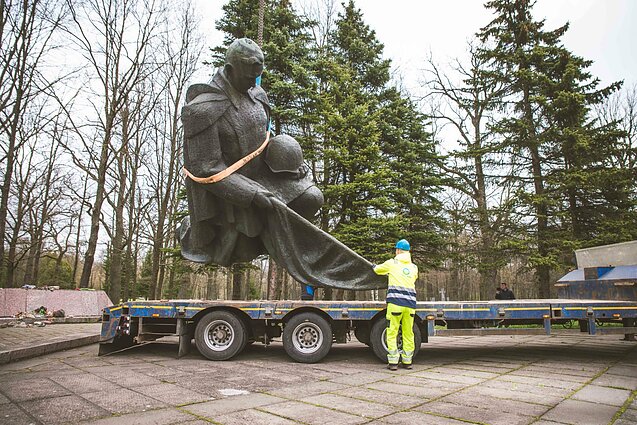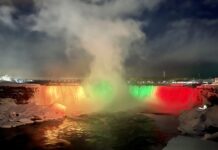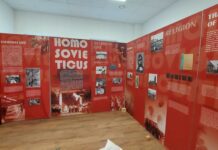
Russia’s war in Ukraine has unleashed a wave of initiatives across Lithuania to remove the remaining signs of its Soviet past, reports LRT.lt. A newly proposed “desovietization” law is aimed at speeding up the process.
Last week, the town of Raseiniai in western Lithuania dismantled a monument to Red Army soldiers that had stood there for some 70 years. It is only the latest in a series of demolitions of Soviet-era monuments that represents the biggest wave of “desovietization” since the early 1990s.
Although Lithuania removed all Lenins, Stalins, and Dzerzhinskys from its squares soon after regaining independence, some Soviet monuments – mostly World War Two memorials marking the burial sites of Red Army soldiers – were left in peace until now. Some of them were listed as protected heritage, adding another barrier to attempts at taking them down.
However, the Russian invasion of Ukraine has forced Lithuanians to take another look at the monuments that many associate with Moscow’s domination over their country. Twenty-six municipalities have turned to the Department of Cultural Heritage, asking to remove protections on Soviet memorials so that they can be taken down.
And now, the Lithuanian parliament Seimas has drafted a “desovietization” bill in order to speed up not only the removal of statues and monuments but also changing the remaining names of streets and squares that still remind of the Soviet era.
“We are talking about the remaining names of monuments, squares, streets, and also of schools. It is very important that there is a second part of this law – to discuss who were the people after whom streets are named, what do they mean for our state and our history,” says Paulė Kuzmickienė, chairwoman of the Commission for Freedom Struggles and Historical Memory.
It is not yet clear how many sites across the country will be affected by the law. The Lithuanian Genocide and Resistance Research Centre (LGGRTC) and local authorities will have to decide which individual dignitaries, in particular, do not deserve public tributes.
For example, author Liudas Gira, who supported Lithuania’s annexation to the Soviet Union in 1940, still has 20 streets named after him across the country.
The final decision on whether to change or remove a tribute to a person would be taken by the LGGRTC, a government-appointed body researching Lithuania’s World War Two and Soviet history.
The authors of the bill expect that the public will be able to take part in discussions. “The law does not stipulate who will be consulted, how they will be consulted, what the exact mechanism will be, that’s something missing,” notes Mingailė Jurkutė, a historian with the LGGRTC. “The Soviet heritage and occupation is a complex topic and cannot be left to the public alone because it is too deep and complex.”
Town mayors have welcomed the moves to give them more freedom to “desovietise” their municipalities, but say it is only the beginning of a long process. “Since we took the decision on the demolition of the monuments in the local council, there have even been council members who have spoken out against the dismantling,” says Andrius Bautronis, the mayor of Raseiniai. “Imagine what happens when we start deliberating the renaming of streets, how many sentiments will there be? It would certainly be a smoother work if we did not have any discussions about personalities who collaborated with the [Soviet] government.”
If passed in the parliament, the bill, entitled the Law on the Prohibition of Promoting Totalitarian and Authoritarian Regimes and their Ideologies, will come into force on November 1 and will have to be implemented within a few years.
After Lithuania restored its independence in 1990, the vast majority of the Soviet statues were taken down and dumped in different places. Viliumas Malinauskas, a mushroom magnate, asked Lithuanian authorities to grant him possession of the sculptures, so that he could build a privately financed museum. Founded in 2001 this Soviet-theme park, unofficially called Stalin World, was created in the wetlands of the Dzūkija National Park. Many of its features are re-creations of Soviet Gulag prison camps: wooden paths, guard towers, and barbed-wire fences.





























